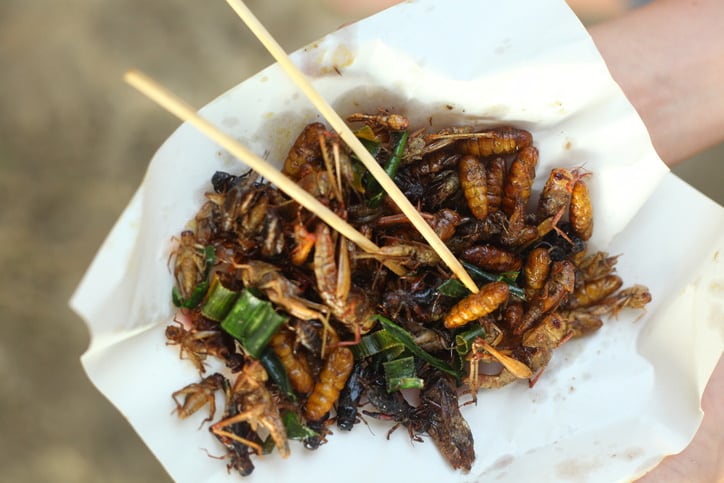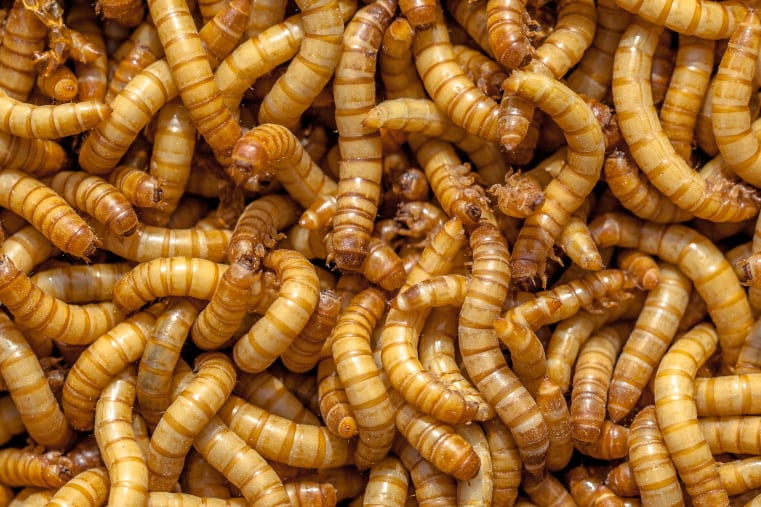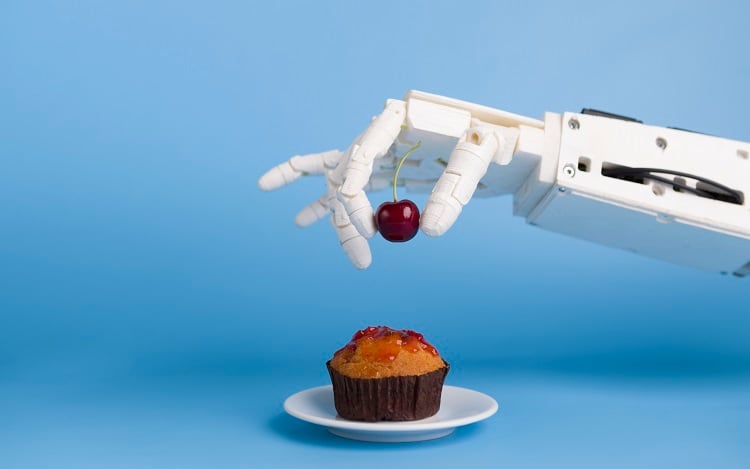EFSA’s latest batch of scientific opinions on novel food applications includes a significant first – a safety assessment of a proposed insect-derived food product: dried yellow mealworm.
The safety authority’s opinion was coordinated by Ermolaos Ververis, a chemist and food scientist at EFSA.
“Insects are complex organisms, which makes characterising the composition of insect-derived food products a challenge. Understanding their microbiology is paramount, considering also that the entire insect is consumed,” he explained.
Various insect-derived foods have been heralded as a potential source of dietary protein. In assessing whether these novel ingredients are safe, EFSA’s scientific opinion took into account myriad issues, from protein content to allergens.
“Formulations from insects may be high in protein, although the true protein levels can be overestimated when the substance chitin, a major component of insects’ exoskeleton, is present,” the food scientist noted.
“Critically, many food allergies are linked to proteins so we assess whether the consumption of insects could trigger any allergic reactions. These can be caused by an individual’s sensitivity to insect proteins, cross-reactivity with other allergens or residual allergens from insect feed, for example gluten.
“It’s challenging work because the quality and availability of data varies, and there is a lot of diversity among insect species.”
So, what did EFSA conclude about dried yellow mealworm?
The EFSA Panel on Nutrition, Novel Foods and Food Allergens (NDA) determined: “There are no safety concerns regarding the stability of the [novel food] if the NF complies with the proposed specification limits during its entire shelf life.”
The primary components of dried yellow mealworm are protein, fat and fibre. The panel noted that levels of contaminants depend on whether these substances are present in the insect feed. In other words, chemicals – including allergens – present in feed may end up in the finished product. The Panel added that people who are allergic to crustaceans and dust mites may also be allergic to yellow mealworm.
What does this mean for the industry?
While the favourable assessment will have to be confirmed by the EC’s Health Directorate General, which will give the final authorisation, this is nevertheless a significant checkpoint on the road to novel food approval. EFSA’s scientific advice supports EU and national decision makers who are responsible for authorising these products for the European market.
The opinion was based on a novel food application submitted by the French company EAP Group Agronutris back in early 2018. Agronutris proposed to use yellow mealworm as whole, dried insects in the form of snacks, and as a food ingredient in a number of food products.
Responding to the news, Agronutris' co-founder Cedric Auriol said: “It is a real step for our company and for the industry. Thanks to 10 years of R&D, we are proud to contribute to the emergence of the edible insects' sector in Europe.”
The International Platform of Insects for Food and Feed (IPIFF) - the European umbrella organisation representing stakeholders active in the production of insects for food and feed – also welcomed the opinion – and agreed that it is likely to have important implications for the European insect sector as a whole.
“The release of this document indeed represents an important milestone towards the wider EU commercialisation of edible insects,” according to the IPIFF President, Antoine Hubert. “It constitutes a major step forward for other European producers of yellow mealworm and other edible insect species for which a novel food application has been submitted.”

One such applicant is Ÿnsect, who agreed this ‘major step forward’ should pave the way for future approvals, particularly on human consumption of defatted insect protein.
The company has submitted its novel food application (without requesting information protection for five years, so that its data can be used by all within the European sector) demonstrating an allergen profile ‘much lower than using the whole insect’.
"This breakthrough is a major achievement that rewards the work that has been done for years by the entire European insect industry gathered under the IPIFF umbrella. We hope that this positive assessment will be the first of many,” said Antoine Hubert, CEO of Ÿnsect.
Overcoming the ‘yuck’ factor for environmental and economic gains
The positive safety opinion of EFSA may go some way to reassuring European consumers, many of whom may be hesitant to sample insect-based foods as these are not a customary part of the European diet.
“There are cognitive reasons derived from our social and cultural experiences, the so-called ‘yuck factor’, that make the thought of eating insects repellent to many Europeans,” Giovanni Sogari, a social and consumer researcher at the University of Parma, observed.
Getting products onto the market – and allowing consumers to become accustomed to them – will be key to gaining acceptance, Sogari continued. “With time and exposure such attitudes can change,” he suggested.
Getting Europeans familiar with the prospect of eating insect-based foods and, indeed, increasing consumption has a number of ‘environmental and economic’ benefits, according to Mario Mazzocchi, an economic statistician and professor at the University of Bologna.
Insects are a more resource-efficient way of producing protein than traditional livestock rearing. The FAO estimates that crickets need six times less feed than cattle, four times less than sheep, and half as much as pigs and broiler chickens to produce the same amount of protein.
Food production accounts for 25% of all human greenhouse gas emissions. Livestock is a huge contributor and insect-based products have a smaller carbon footprint than conventional livestock, emitting fewer greenhouse gasses and less ammonia.
“There are clear environmental and economic benefits if you substitute traditional sources of animal proteins with those that require less feed, produce less waste and result in fewer greenhouse gas emissions,” Mazzocchi noted.
“Lower costs and prices could enhance food security and new demand will open economic opportunities too, but these could also affect existing sectors.”


